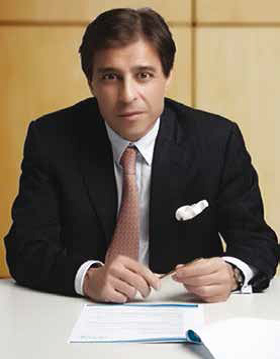
Mr Philippe Wolgen, managing director, Clinuvel
Singapore: Australia-based Clinuvel has developed SCENESSE, its proprietary first-in-class photo protective drug, for individuals who are at greatest risk from visible and ultraviolet (UV) light and as a repigmentation therapy. The company has been focusing on diseases where no existing preventative treatment exists. Clinuvel commenced a clinical program in 2006 which focused on the rare disease erythropoietic protoporphyria (EPP), a metabolic disorder which causes painful burning reactions under the skin after even brief exposure to sunlight.
In 2015, the drug has been approved for marketing authorization under exceptional circumstances by the European Medicines Agency for EPP and Clinuvel is currently trialing SCENESSE in a range of light and UV related skin disorders (photodermatoses) and as a repigmentation therapy in vitiligo.
In a conversation with BioSpectrum Asia in Singapore, Mr Philippe Wolgen, managing director, Clinuvel highlights the company's strategies to get access to
new market and his keen interest in Singapore as the gateway.
For how long has Clinuvel been present in Singapore? What are the major activities in the center?
Clinuvel has been in Singapore for three years. We first started with clinical works in partnership with National Skin Center and now we are building our labs to do chemistry and more fundamental work in Singapore. The reason for enhancing our presence in Singapore is to have access to better people and central location that is easily reachable from Australia as well as Europe. The future is Asia, hence looking at the market forecast, this would be a strategic movement.
How significant is Asia for Clinuvel? What are major challenges of entering into new market?
Currently, the focus on Asia is pretty small but the market is bound to grow. Clinuvel is focusing on a skin condition, vitiligo, in which the skin loses its
pigments. It is more prevalent in Asia than US and Europe. Many of the Indian patients we know are stigmatized because of the disease. India is an important market for us but we cannot enter directly into the region so we are taking a step-wise procedure. First we want to strengthen our base in Singapore and then enter India market. We are aware of all the important clinical institutes and associations in India. However, we do not have plans to do trials in India since the regulations for doing trial is difficult in that part of the geography. We want to take our data from US, Europe and Singapore clinical trials to India. Another major problem in India is patient adherence to trial compliances. Sometimes patients have to travel few miles to reach to the trial center and sometimes they just quit the trial half way. That doesn't contribute to our clinical research.
Where have you conducted clinical trials and how challenging is it to get regulatory approvals in Asian countries?
Our clinical trials are done in Singapore, US, Europe and Australia. The two watchdogs in our industry, EMA and FDA, are the golden standards. So if we have approval from these two agencies, it is not very difficult to get regulatory nod in other countries as well. So we can have the biggest market in Asia if we can get approvals from these two agencies.
How challenging it is to raise funds for drug discovery and development for a small sized company?
The median number of funding of a pharma company is about $600 million if one wants to take out a new molecule from lab to the clinic. The big pharmaceutical
companies are not very interested in fundamental research or a new drug or it would be limited to one or two drugs out of the pipeline of, say, 20 drugs. The advantage of a mid-size company is that they have one or two drugs in their pipeline and they are able to focus 100 percent on those developments. And if a midsize company can retain a team of developers for a decade or more, there is a great knowledge sharing. That is why small sized companies are able to do much better than big pharmaceutical companies in drug development. Big pharma companies are the sales arm and mid size companies are R&D arm.




